Iranian President Ebrahim Raisi on Tuesday appealed for national unity and tried to allay anger against the country’s rulers, even as the anti-government protests that have engulfed the country for weeks continued to spread to universities and high schools, the AP reports.
Raisi acknowledged that the Islamic Republic had “weaknesses and shortcomings,” but repeated the official line that the unrest sparked last month by the death of a woman in the custody of the country’s morality police was nothing short of a plot by Iran’s enemies.
A New York Times’ analysis of videos posted to social media reveals how Iran’s current protests are widespread geographically, ethnically and among various social classes.
Protesting students, chasing away an #Iranian official from their school, shouting: Shame on you…October 3rd… #MahsaAmini pic.twitter.com/eFmRhvaN2H
— Rana Rahimpour (@ranarahimpour) October 3, 2022
“We haven’t seen national protests at this level and with this many folks that we would traditionally categorize as the middle class since 2009,” said Johns Hopkins professor Narges Bajoghli, who noted how similar rituals for those killed in the 1979 Islamic Revolution were key to support for the revolution’s success. “And so now we’re seeing it again, but we’re seeing it in a new generation that’s doing it, and we’re seeing it link up with smaller towns across the country and with people who are not from the middle class.”
Iran’s leadership is holding the ongoing nationwide protests in contempt, viewing them as leaderless uprisings that are doomed to fizzle out, some reports suggest. The regime is also betting that international denunciations of its repression of the protests will go away because of the global preoccupation with the Ukraine war.
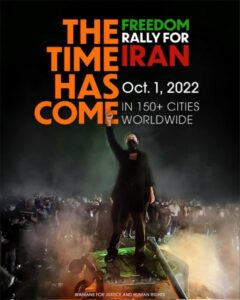 The regime is well equipped for repression, The Economist observes. Its ranks are filled with hardened veterans of war in Syria and Iraq, many of them expert in cracking down at home. Special tribunals have been reintroduced. Warehouses as well as prisons are filling up with detainees, including dissident journalists.
The regime is well equipped for repression, The Economist observes. Its ranks are filled with hardened veterans of war in Syria and Iraq, many of them expert in cracking down at home. Special tribunals have been reintroduced. Warehouses as well as prisons are filling up with detainees, including dissident journalists.
“They have a playbook of a graduated crackdown that always turns out in the same way,” says Sanam Vakil, an Iranian analyst in London.
The decision of the Iranian security forces, especially the IRGC, to remain a loyal force or refuse to crackdown on protests will depend greatly on what might happen to their grip on economic power, says Roya Izadi, an assistant professor in the Department of Political Science at the University of Rhode Island. The deepening web of economic interests make it unlikely that they will join the protesters, or ease up on the crackdowns.
Iran’s standing army, Artesh, has less economic and political influence and hasn’t been used as extensively to suppress protests in the past, she writes for the Washington Post. That might leave its rank and file more likely to defect in case they are deployed against the protesters. But, short of that, Iran’s military appears unlikely to defect from the regime in support of the current protests.
Opposition to the dress code has been a feature of the country’s tightly controlled civil society ever since the revolution, says analyst Golnar Motevalli.
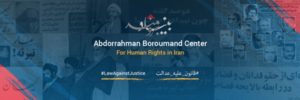 The resurgence of women’s fight against the mandatory hijab started in June 2014, when the courageous pro-reform journalist Masih Alinejad took a selfie without a veil and posted it on her Facebook page, notes Ladan Boroumand, a historian and the cofounder of the Abdorrahman Boroumand Center for Human Rights in Iran. What began as a private act eventually became a political statement, she writes for the Journal of Democracy.
The resurgence of women’s fight against the mandatory hijab started in June 2014, when the courageous pro-reform journalist Masih Alinejad took a selfie without a veil and posted it on her Facebook page, notes Ladan Boroumand, a historian and the cofounder of the Abdorrahman Boroumand Center for Human Rights in Iran. What began as a private act eventually became a political statement, she writes for the Journal of Democracy.
While some observers suggest the protests could precipitate regime change, others are skeptical.
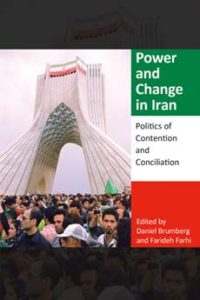 By itself, protest does not change political realities, says Daniel Brumberg, a Non-resident Senior Fellow at Arab Center Washington DC, Director of Democracy and Governance Studies at Georgetown University. To push regimes to liberalize, protesters not only need inspirational leaders who can transform disparate protests into organized collective movements; they also need interlocuters who, by virtue of their positions within or close to regimes, can leverage the demands of demonstrators to convince hardliners to stand back from repression and to open the political arena.
By itself, protest does not change political realities, says Daniel Brumberg, a Non-resident Senior Fellow at Arab Center Washington DC, Director of Democracy and Governance Studies at Georgetown University. To push regimes to liberalize, protesters not only need inspirational leaders who can transform disparate protests into organized collective movements; they also need interlocuters who, by virtue of their positions within or close to regimes, can leverage the demands of demonstrators to convince hardliners to stand back from repression and to open the political arena.
There are three potential scenarios resulting from Iran’s ongoing protests, he writes for the Washington-based Arab Center:
- Regime Collapse: The most unlikely scenario is the full collapse of the regime and its replacement by a coalition of leaders committed to supplanting the Islamic Republic with a competitive democracy. The IRGC will surely do everything it deems necessary to prevent this outcome.
- A Negotiated Peace: A second scenario is an effort by Khamenei and/or the president—perhaps with the support of some veteran hardliners—to end the regime’s confrontation with protesters, to restore order, and to institute measures designed to signal the regime’s desire to somehow heal or narrow the social breach. Given protesters’ fury, the absence of interlocuters, and the coercive power of the IRGC, this outcome also seems very unlikely—although it cannot be excluded.
- Repression by a Strengthened Security Apparatus: With violence escalating on both sides, the most probable scenario is that the IRGC, with the backing of Khamenei, will crush the opposition and then prepare the stage for a successor to the supreme leader, one who will reach no compromise with Iran’s enraged citizens. This strategy, as noted above, could always backfire; but odds are that the regime will prevail, because from its position, the alternative is unacceptable.
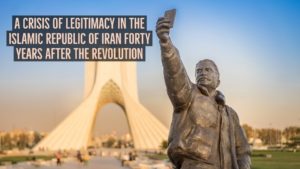 Since last year’s election of Raisi, all levers of Iran’s state and government have been under the control of hard-liners who fiercely defend the centrality of their Islamic ideology, while Khamenei has built a strong relationship with the Islamic Revolutionary Guard Corps, the largest and most powerful wing of Iran’s military, which has helped fortify his position, adds analyst Motevalli:
Since last year’s election of Raisi, all levers of Iran’s state and government have been under the control of hard-liners who fiercely defend the centrality of their Islamic ideology, while Khamenei has built a strong relationship with the Islamic Revolutionary Guard Corps, the largest and most powerful wing of Iran’s military, which has helped fortify his position, adds analyst Motevalli:
Khamenei is the ultimate authority behind all major decisions of the state, including economic and foreign policy, and he’s also the de facto head of several large religious foundations that run some of the country’s biggest conglomerates and pension funds. It’s this consolidation of military power and economic influence that has helped the Islamic Republic, in its current manifestation, to maintain an iron grip on politics. All of Iran’s major state institutions, from the state broadcaster (which has a complete monopoly on broadcast services) to the judiciary, are managed by people close to the Supreme Leader or are politically aligned with him.
On the other hand….
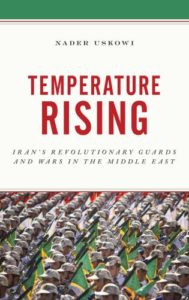 The sheer force, velocity, and audacity of the latest protest movement and the speed with which concern over Khamenei’s health has given way to unprecedented public calls for his ouster have shocked many observers, as has the rage many protesters have directed at the broader theocratic system itself, notes Chatham House analyst Dr Sanam Vakil.
The sheer force, velocity, and audacity of the latest protest movement and the speed with which concern over Khamenei’s health has given way to unprecedented public calls for his ouster have shocked many observers, as has the rage many protesters have directed at the broader theocratic system itself, notes Chatham House analyst Dr Sanam Vakil.
Until recently, the clerical elite may have hoped that the succession process would unfold entirely behind closed doors, as it has in the past. But public anger has now squarely focused on Khamenei’s legitimacy and the legitimacy of the system he represents, she writes for Foreign Affairs. Should Khamenei die while Iran is convulsed by a protest movement on this scale, the challenge to the clerical system could become existential.
What Iran’s hardliners ultimately want is to prevent any kind of reopening of the political arena that might encourage more protests or that allows the Reformists to make their case for political dialogue both at home and abroad, Georgetown’s Brumberg adds. For the IRGC and its allies, this is an existential battle that they cannot afford to lose, even as they face thousands of citizens who are desperately fighting for an entirely different future.
What Video Footage Reveals About the Protests in Iran https://t.co/ztVtZjEh3y
— Democracy Digest (@demdigest) October 4, 2022
The Brookings Institution’s Suzanne Maloney says (below) “protesters across the board, those from all ethnic groups and all parts of the country, are prepared to be more confrontational with the security forces than in previous rounds of unrest that took place in Iran.”







